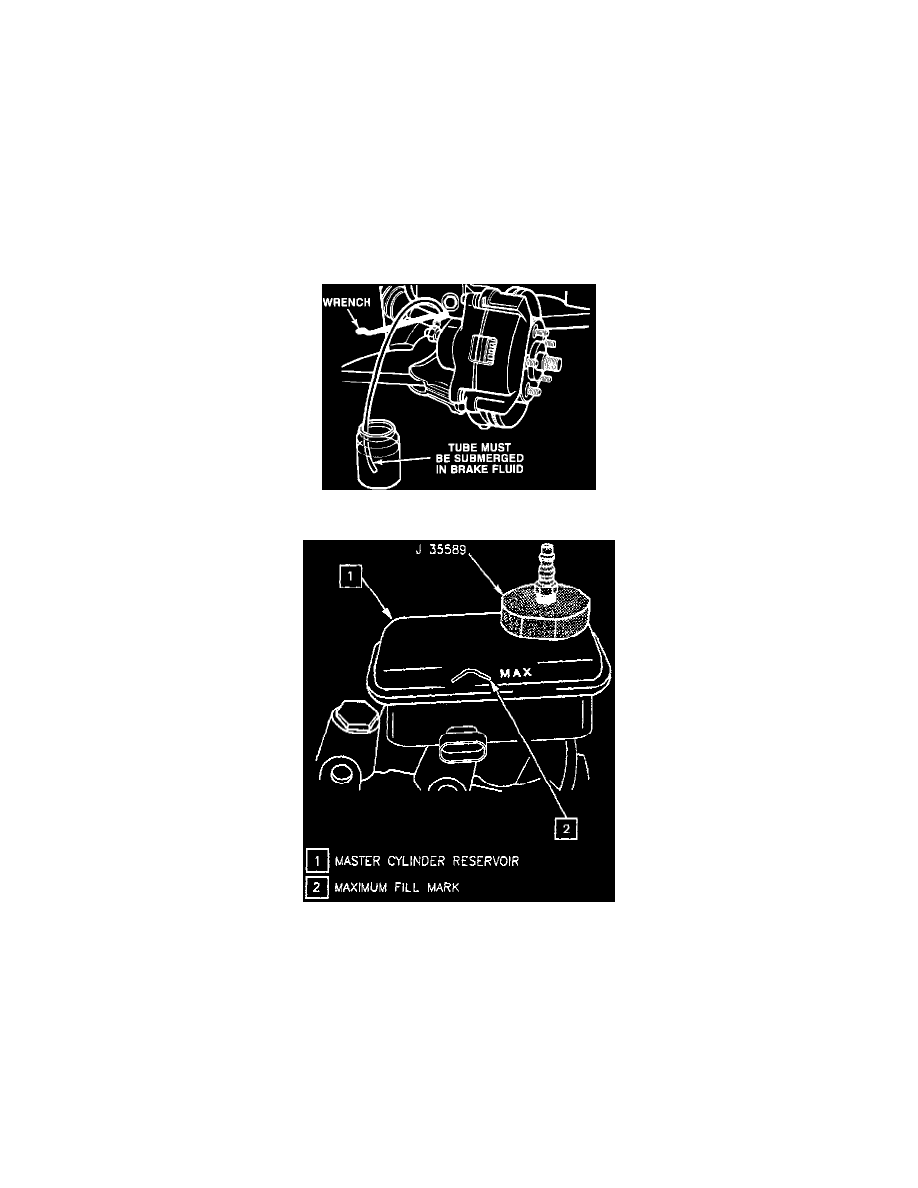Park Avenue V6-3.8L VIN K (1995)

Brake Bleeding: Service and Repair
Pressure Bleeding
BLEEDING BRAKE HYDRAULIC SYSTEM
CAUTION: Do not move the vehicle until a firm brake pedal is obtained. Air in the brake system can cause loss of brakes with possible
personal injury.
Whenever air gets into the brake hydraulic system, you must bleed the system to remove it. You might have to bleed the hydraulic system at all four
wheel positions if air has entered the system due to low fluid level, or from brake pipes having been disconnected at the master cylinder. If a brake pipe
is disconnected at one wheel, only that wheel cylinder/caliper needs to be bled. if pipes are disconnected at any fitting located between the master
cylinder and the wheels, then the brake system served by the disconnected pipe must be bled.
PRESSURE BLEEDING MANUALLY
Fig. 1 Wheel Cylinder Bleeding
Pressure Bleeding Adaptor
NOTICE: Pressure bleeding equipment must be of the diaphragm type. It must have a rubber diaphragm between the air supply and the brake fluid to
prevent air, moisture, oil and other contaminants from entering the hydraulic system.
IMPORTANT: The correct master cylinder bleeder adapter must be used to avoid possible damage to the master cylinder reservoir.
ADJUST
TOOLS REQUIRED:
-
J 21472 Bleeder Wrench
-
J 28434 Bleeder Wrench
-
J 29532 Bleeder Ball
